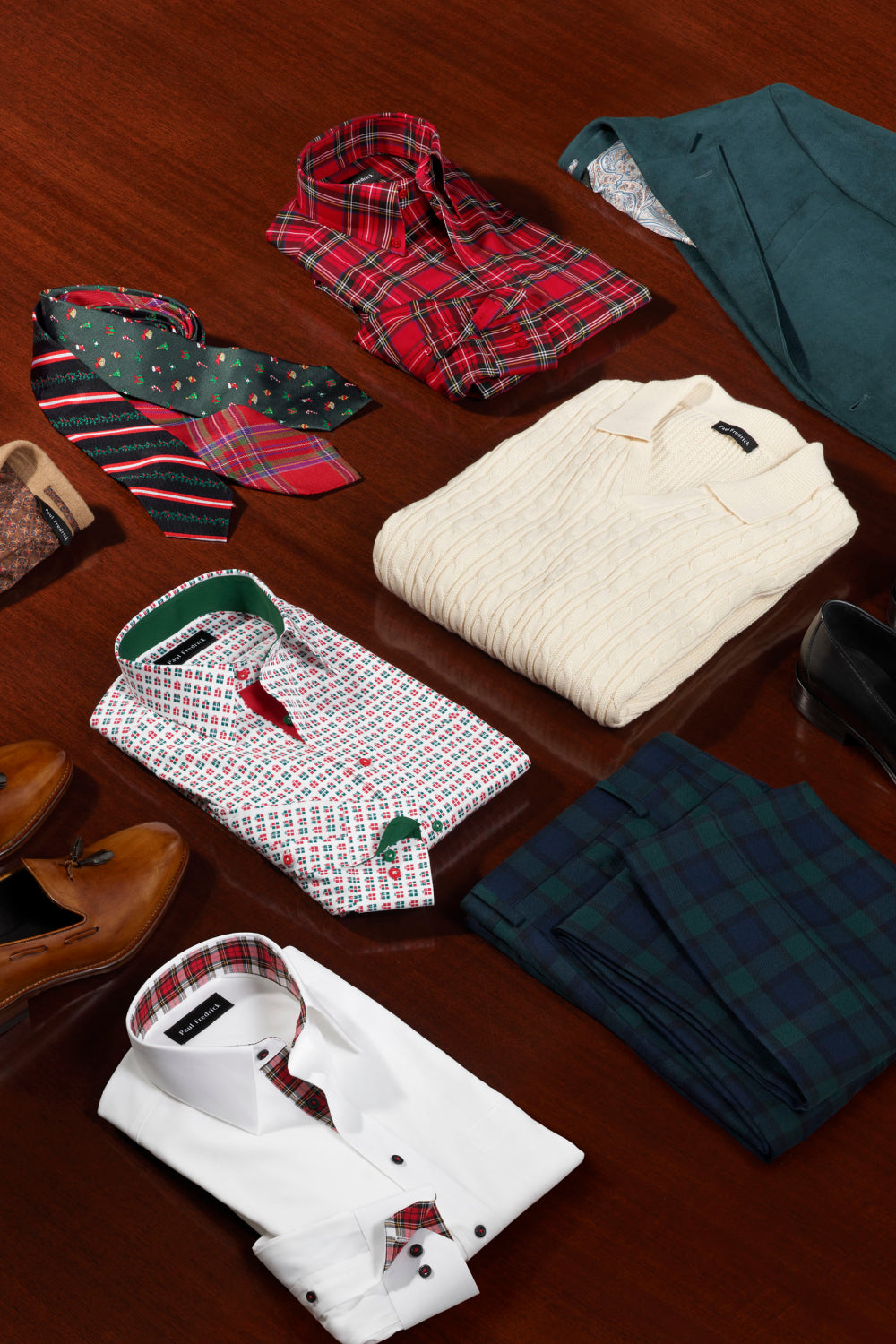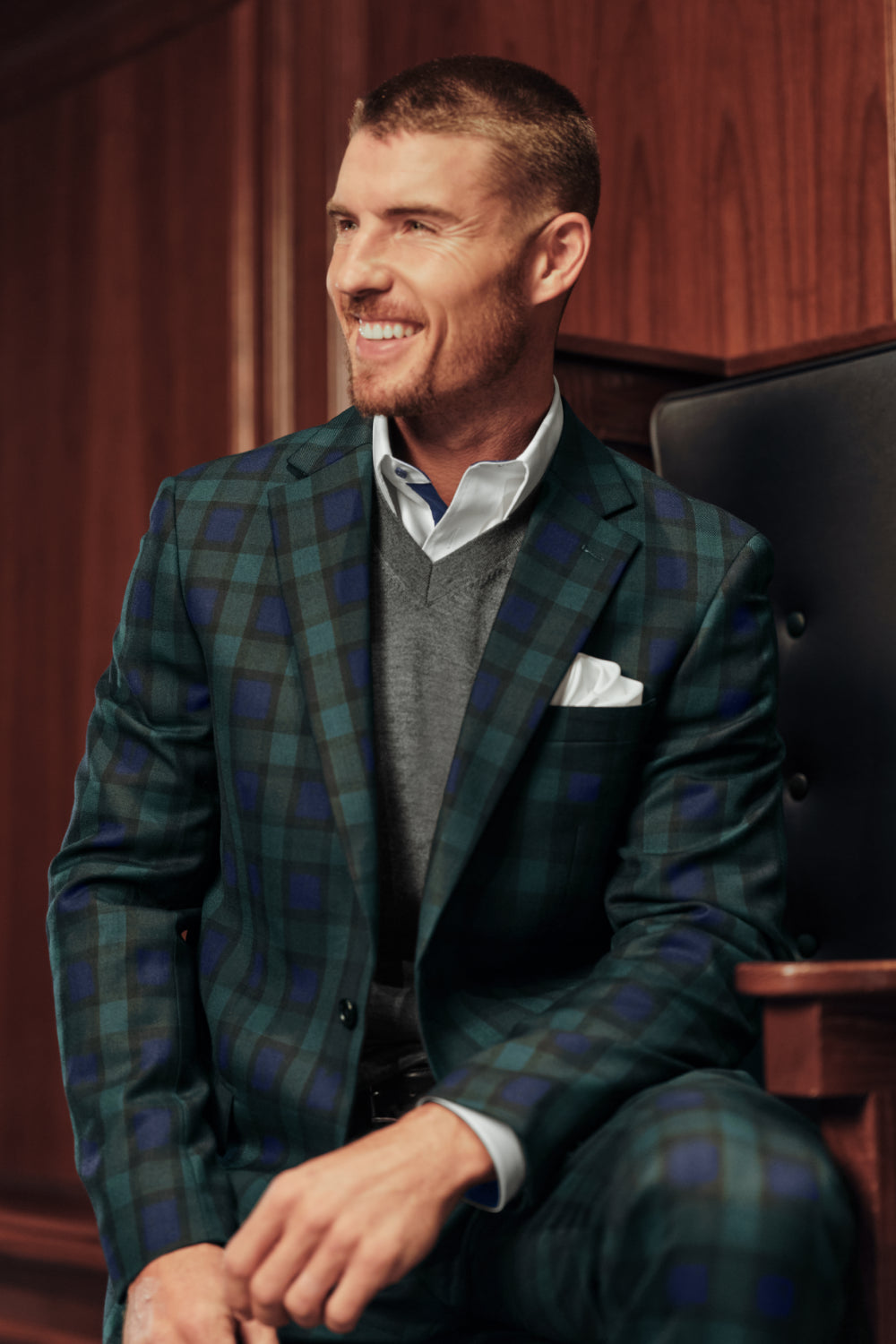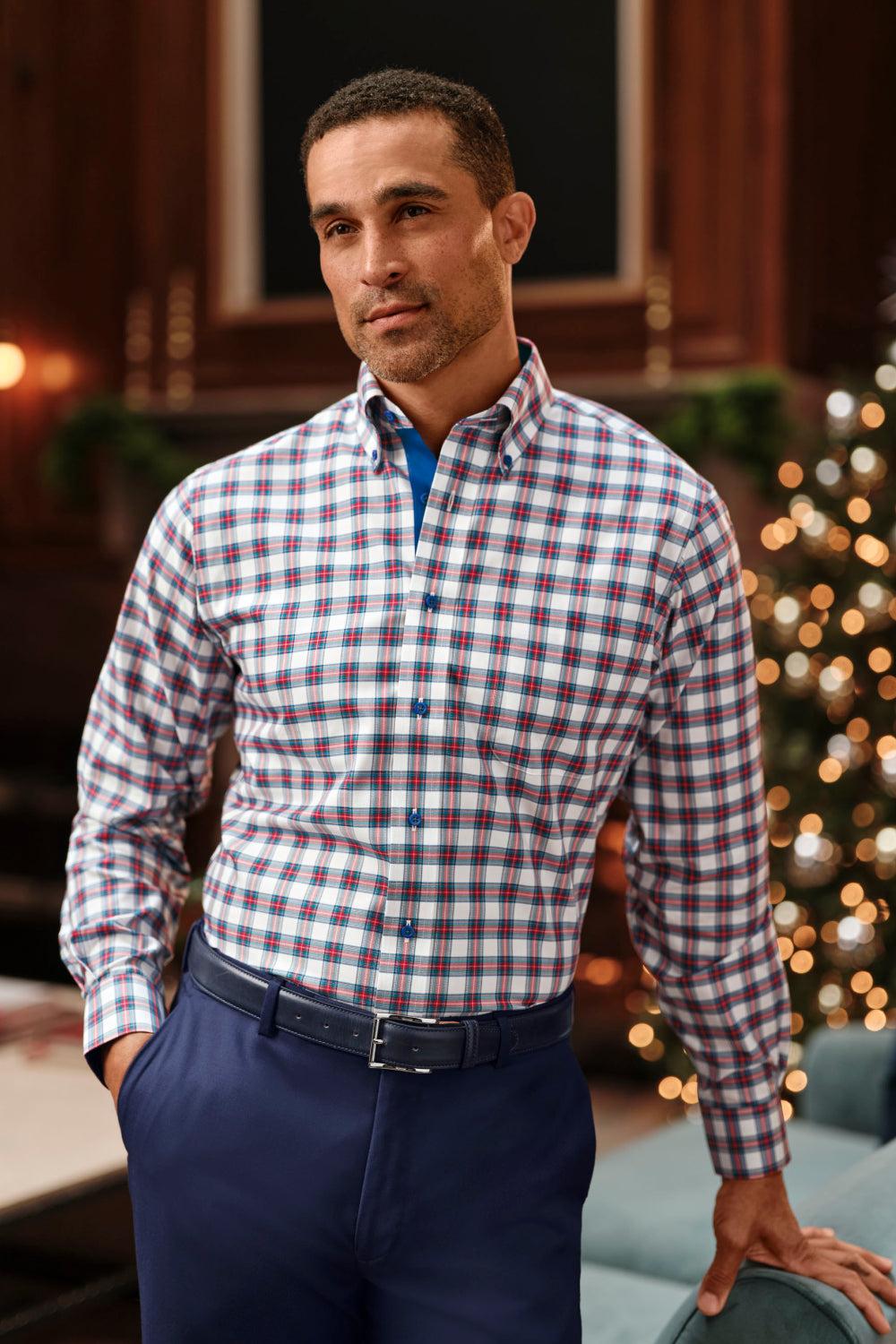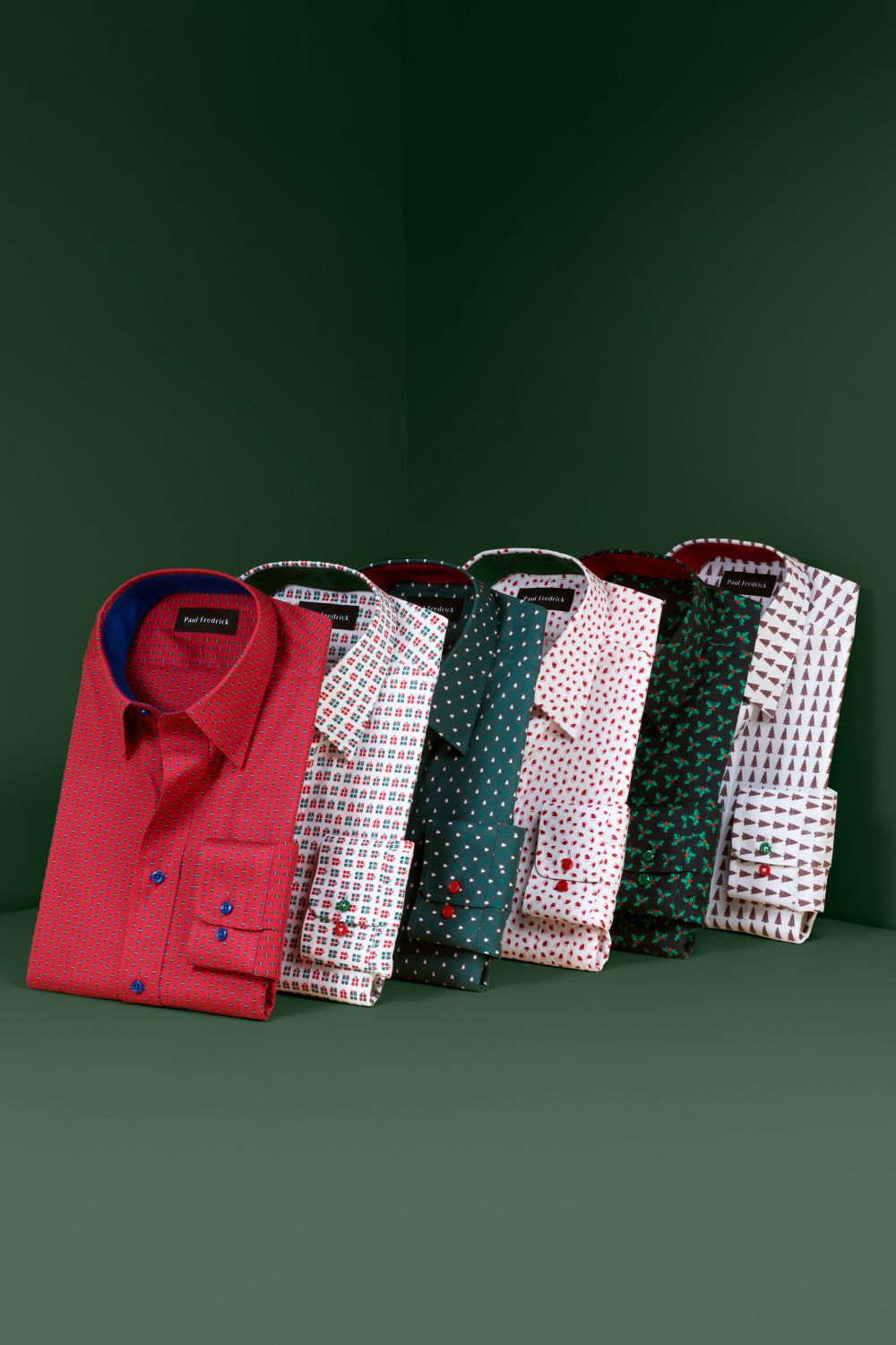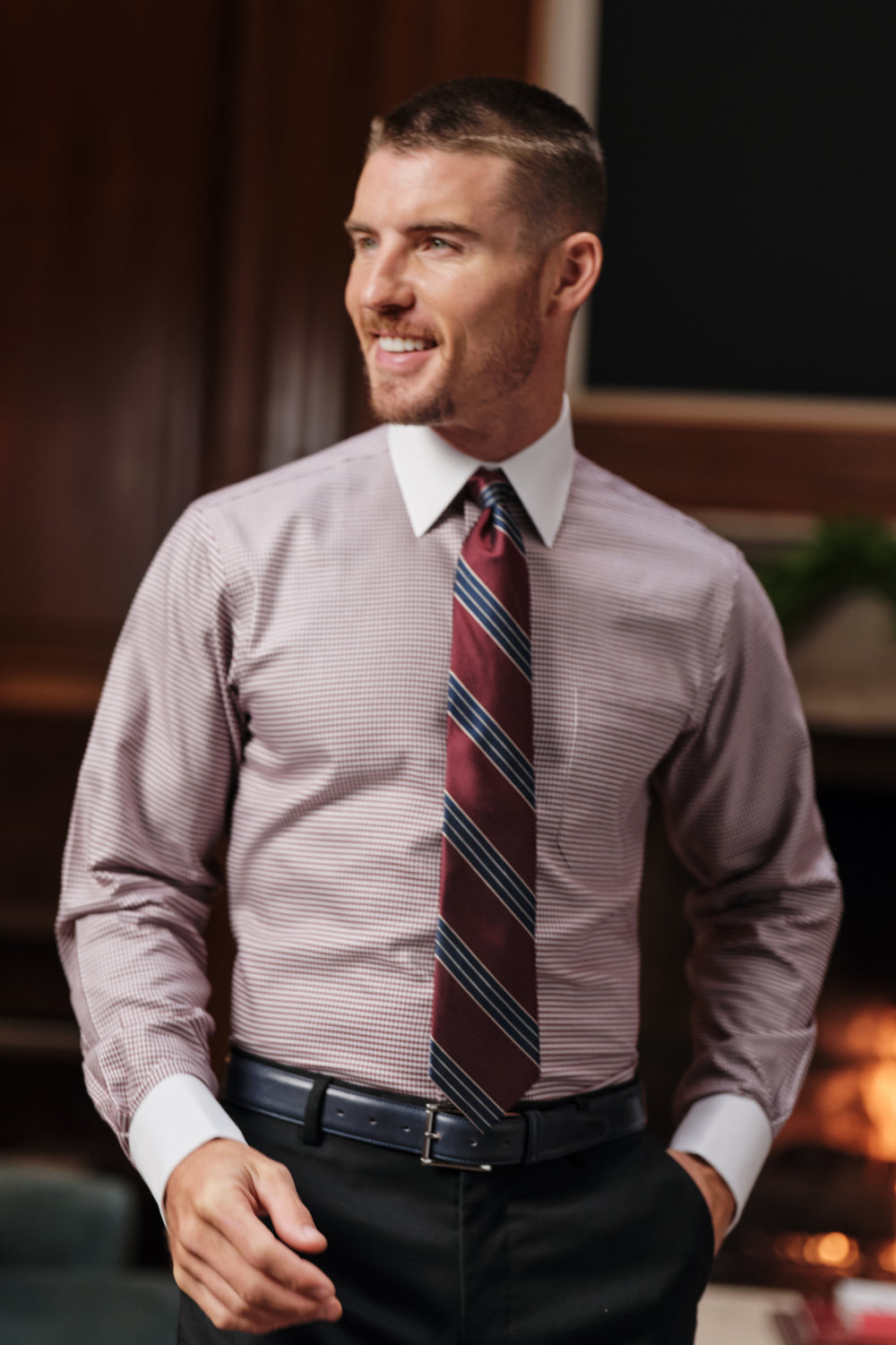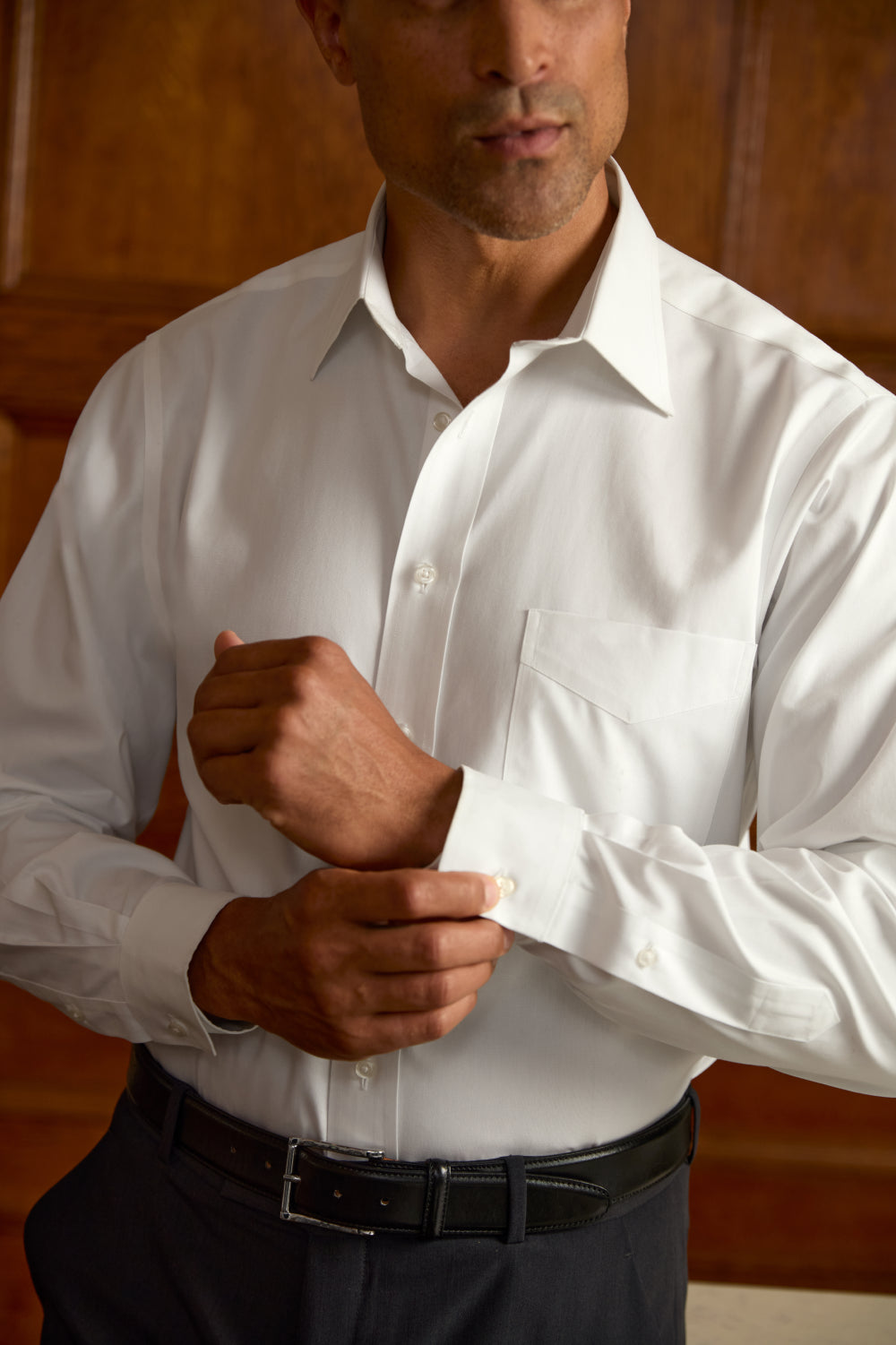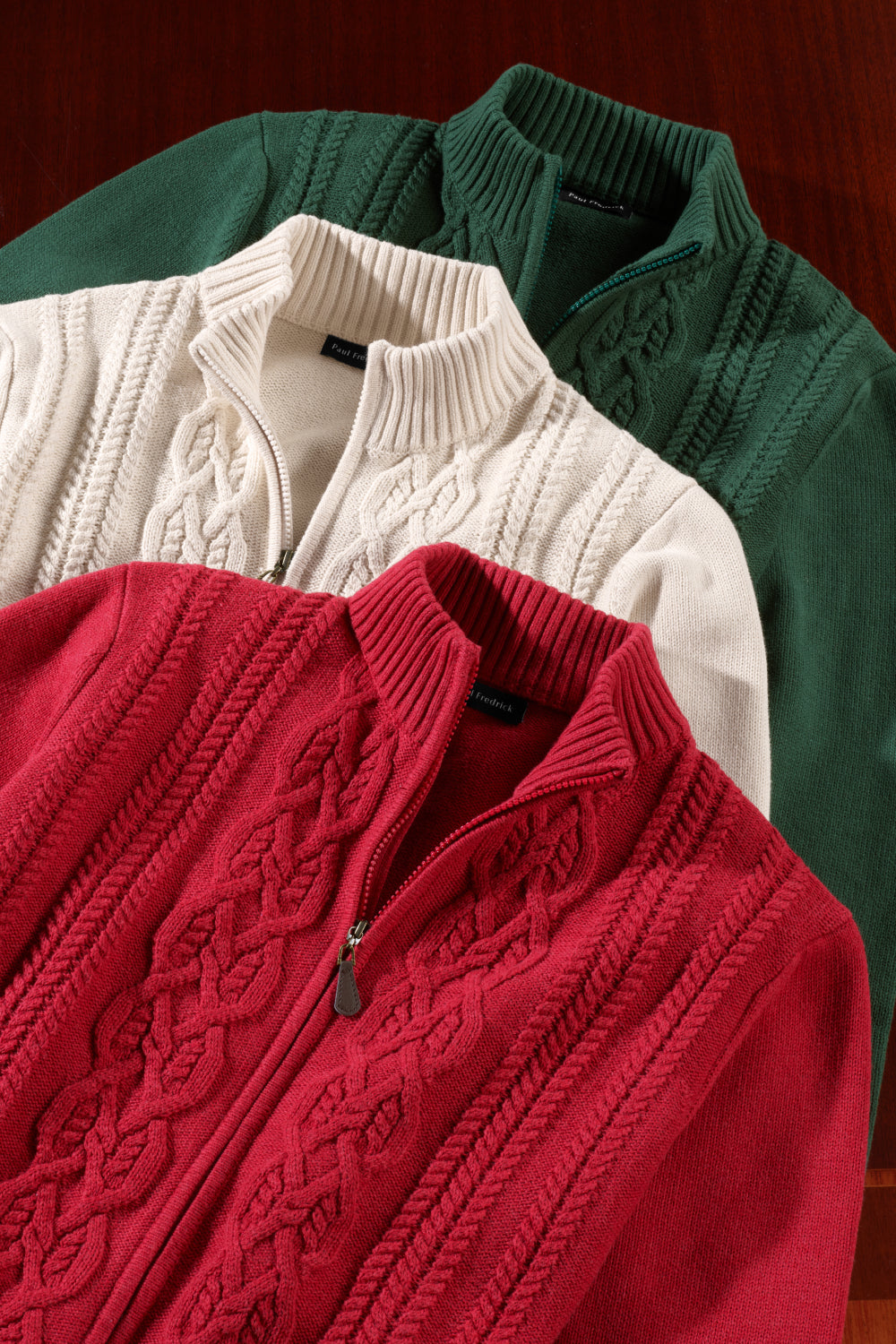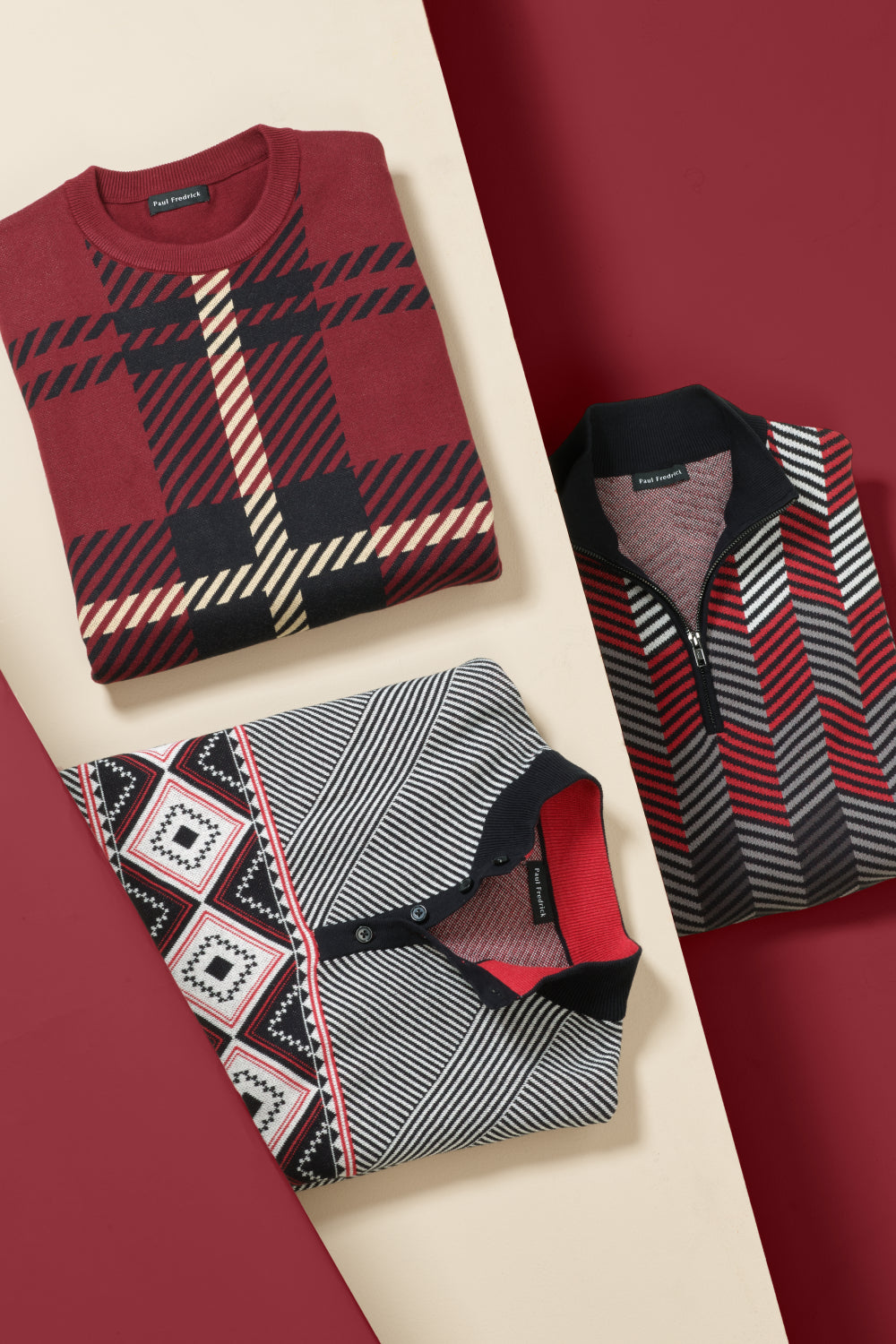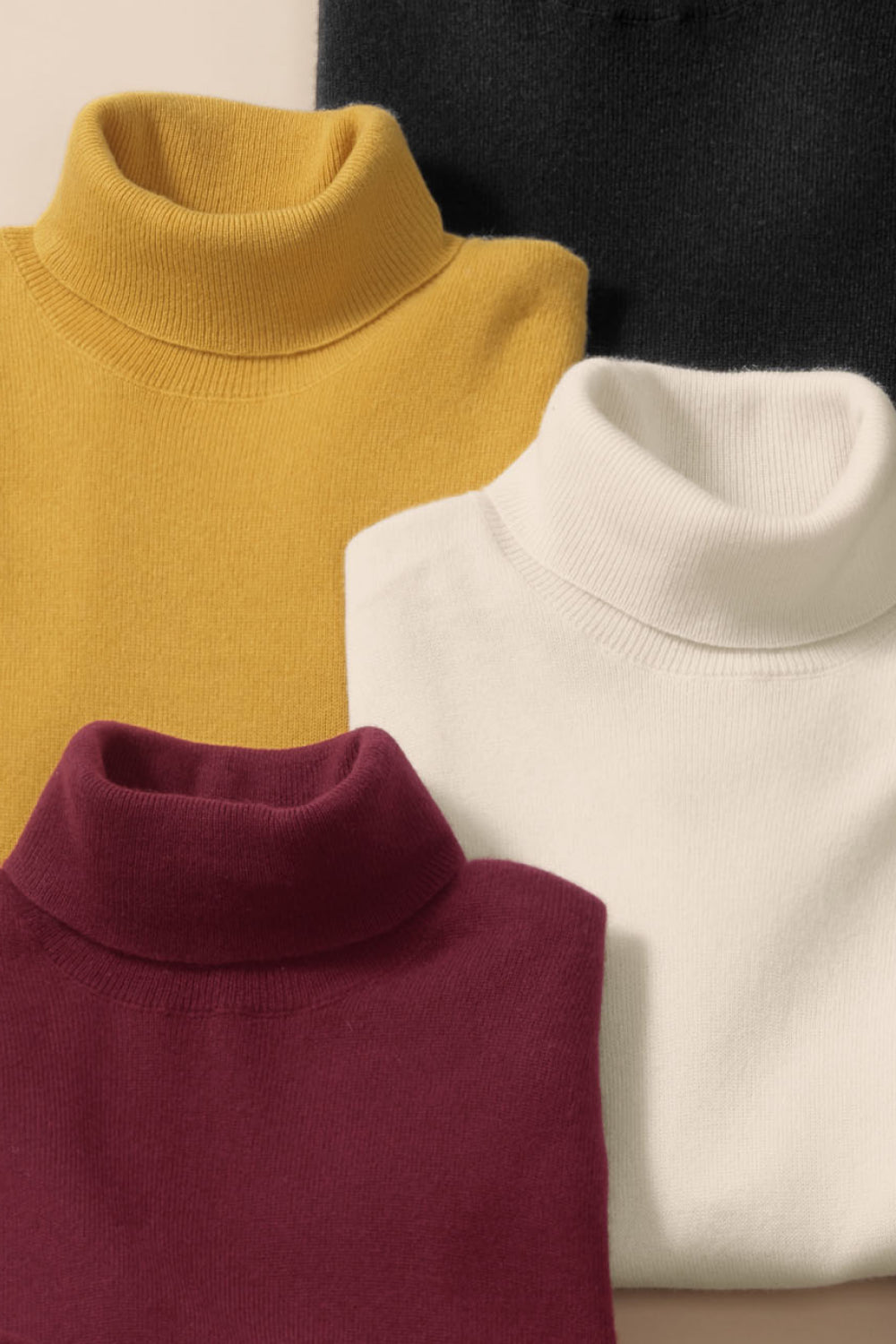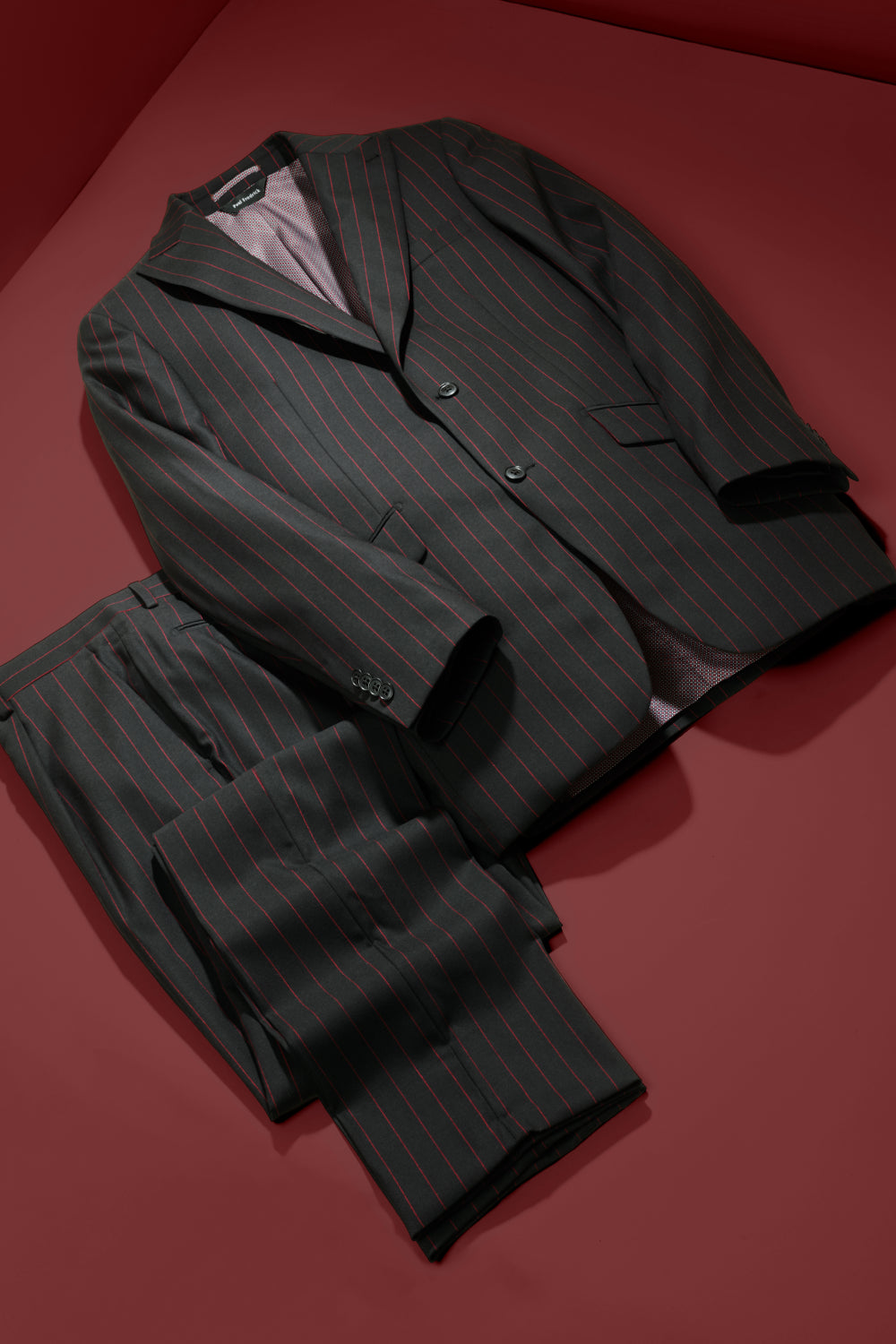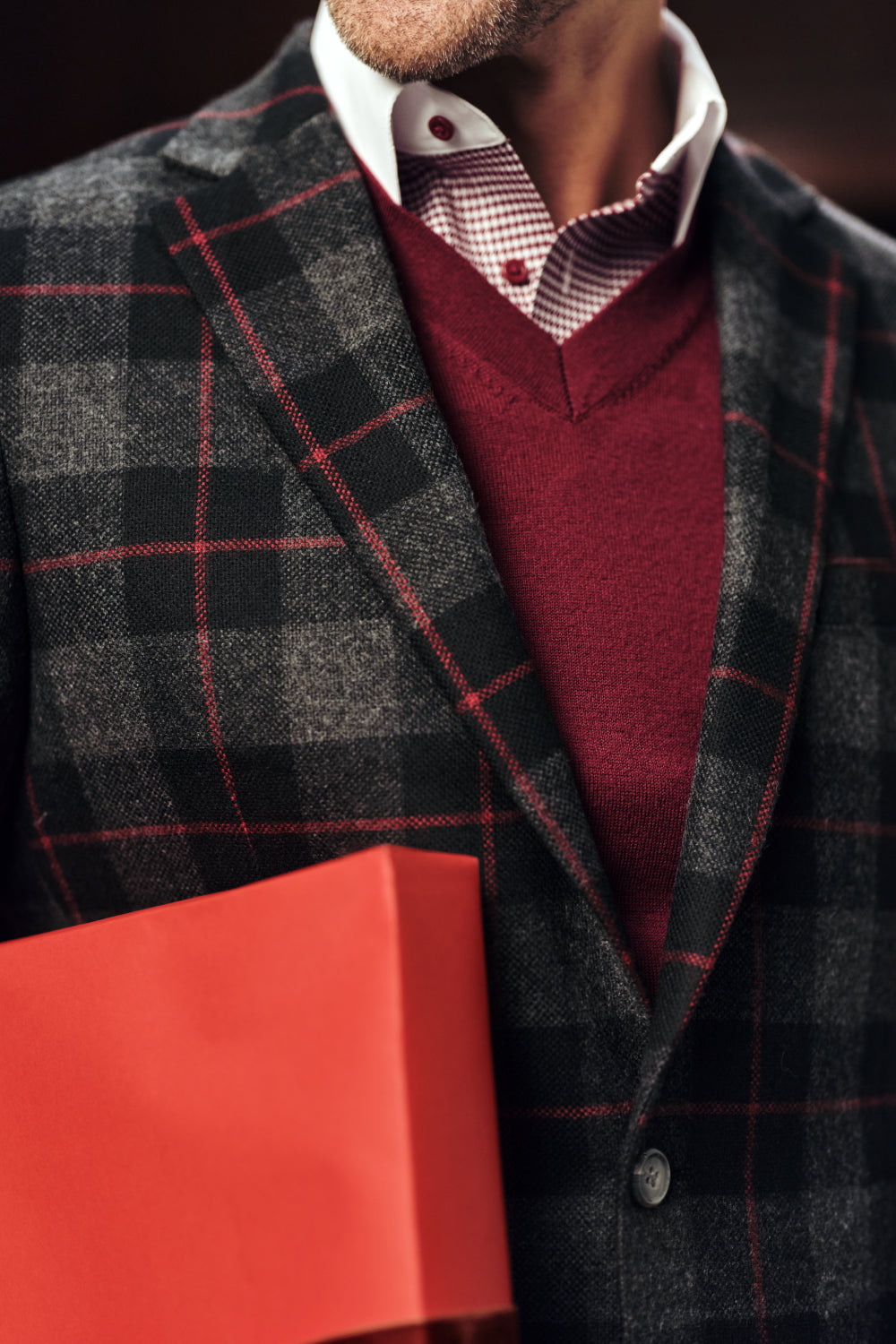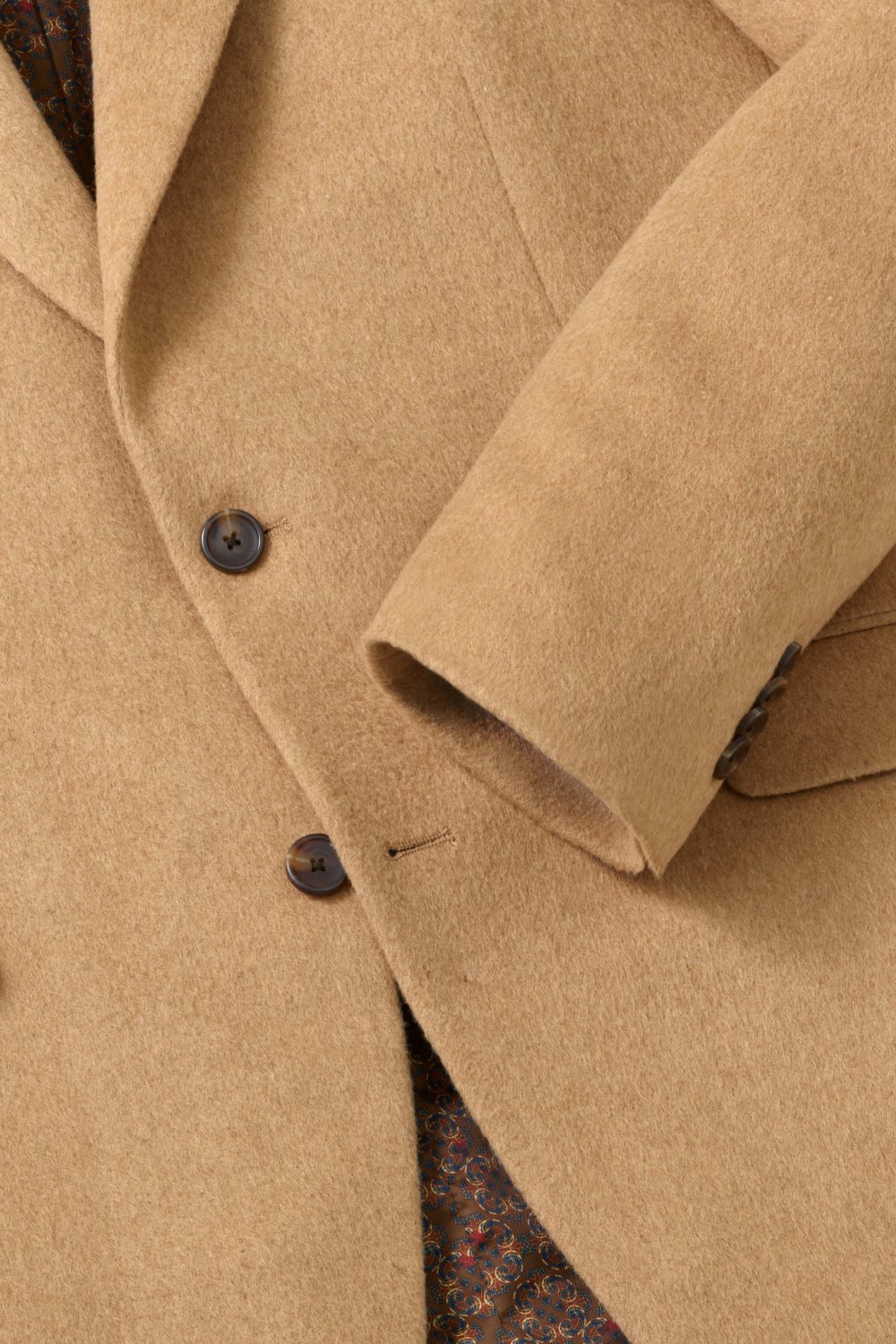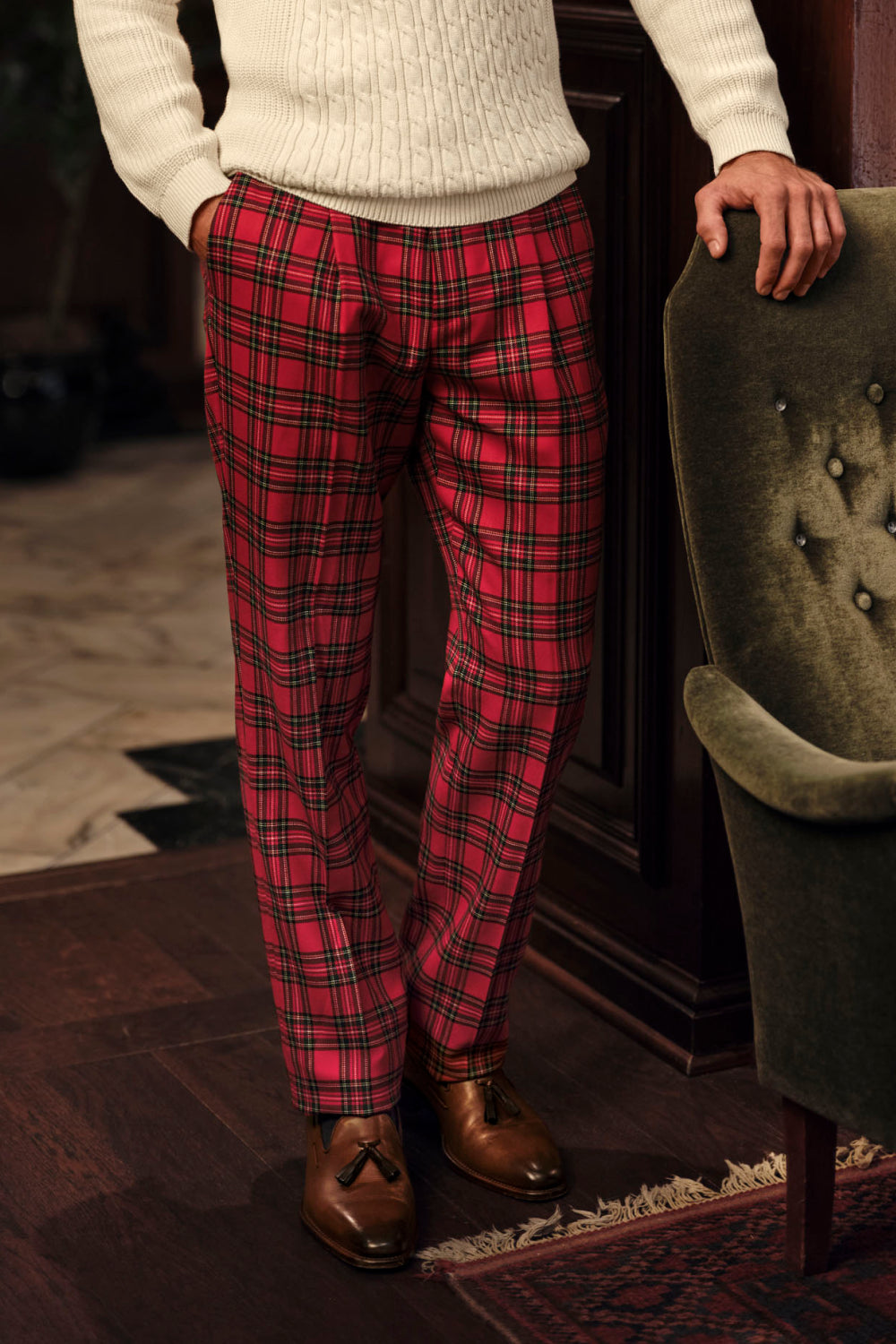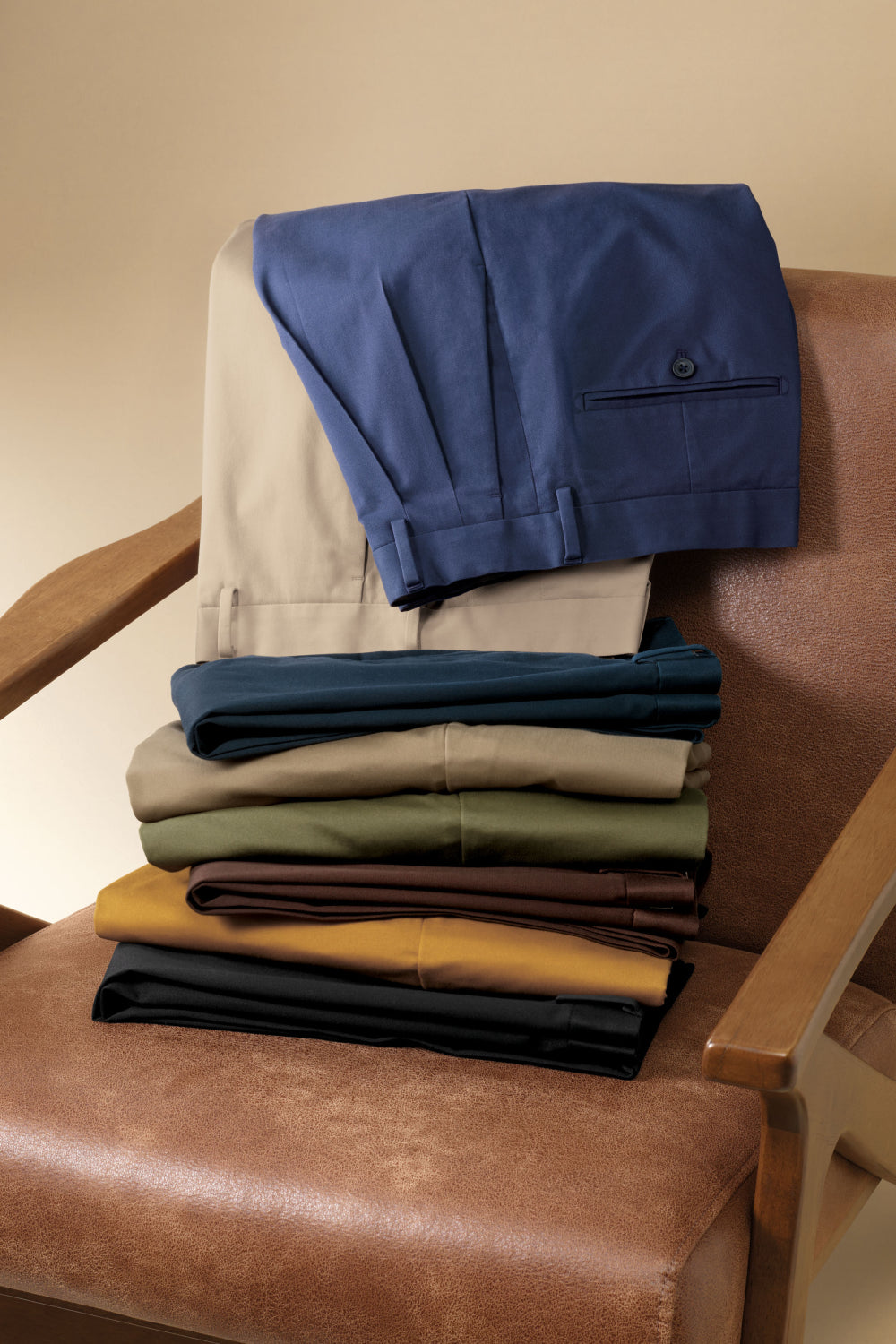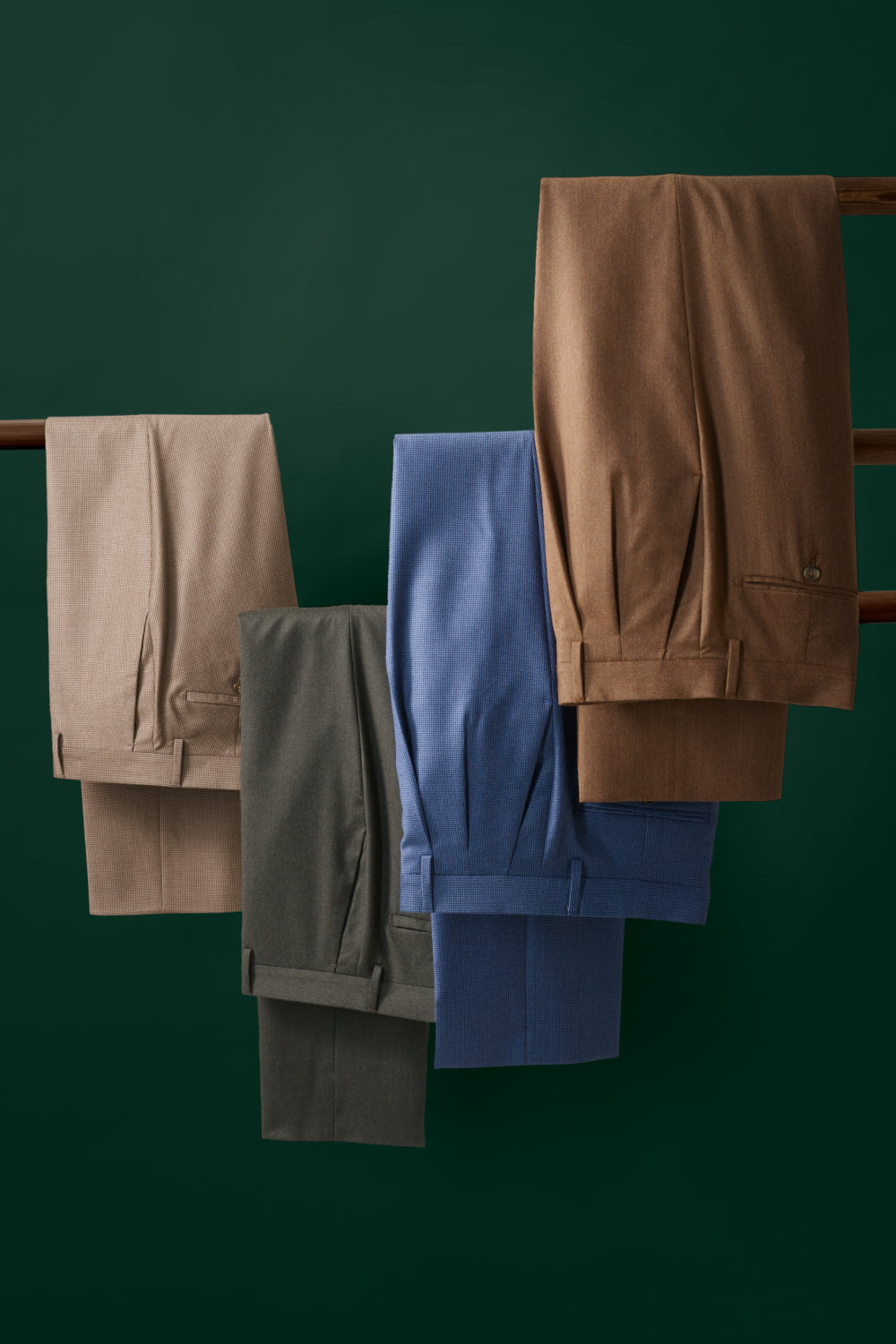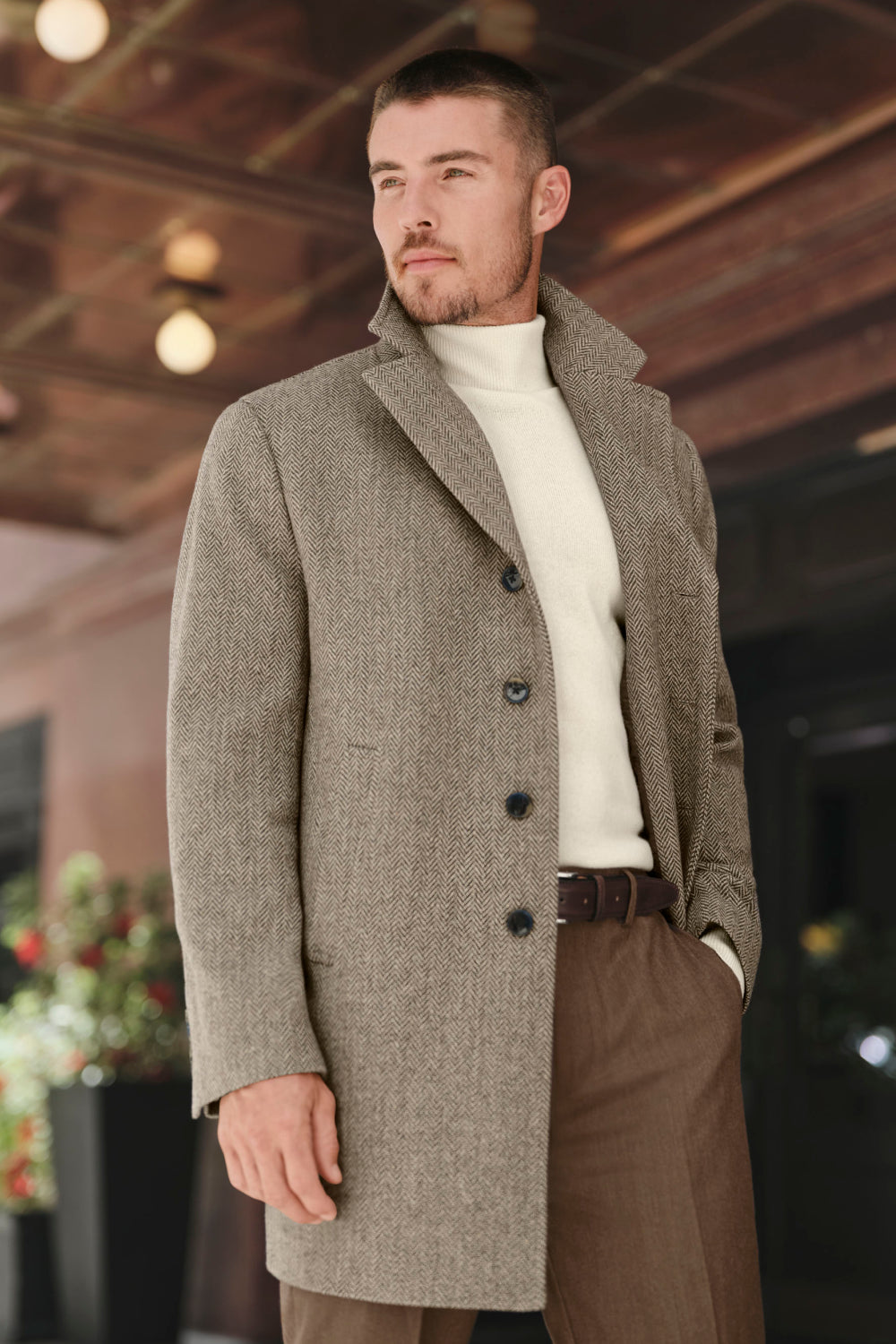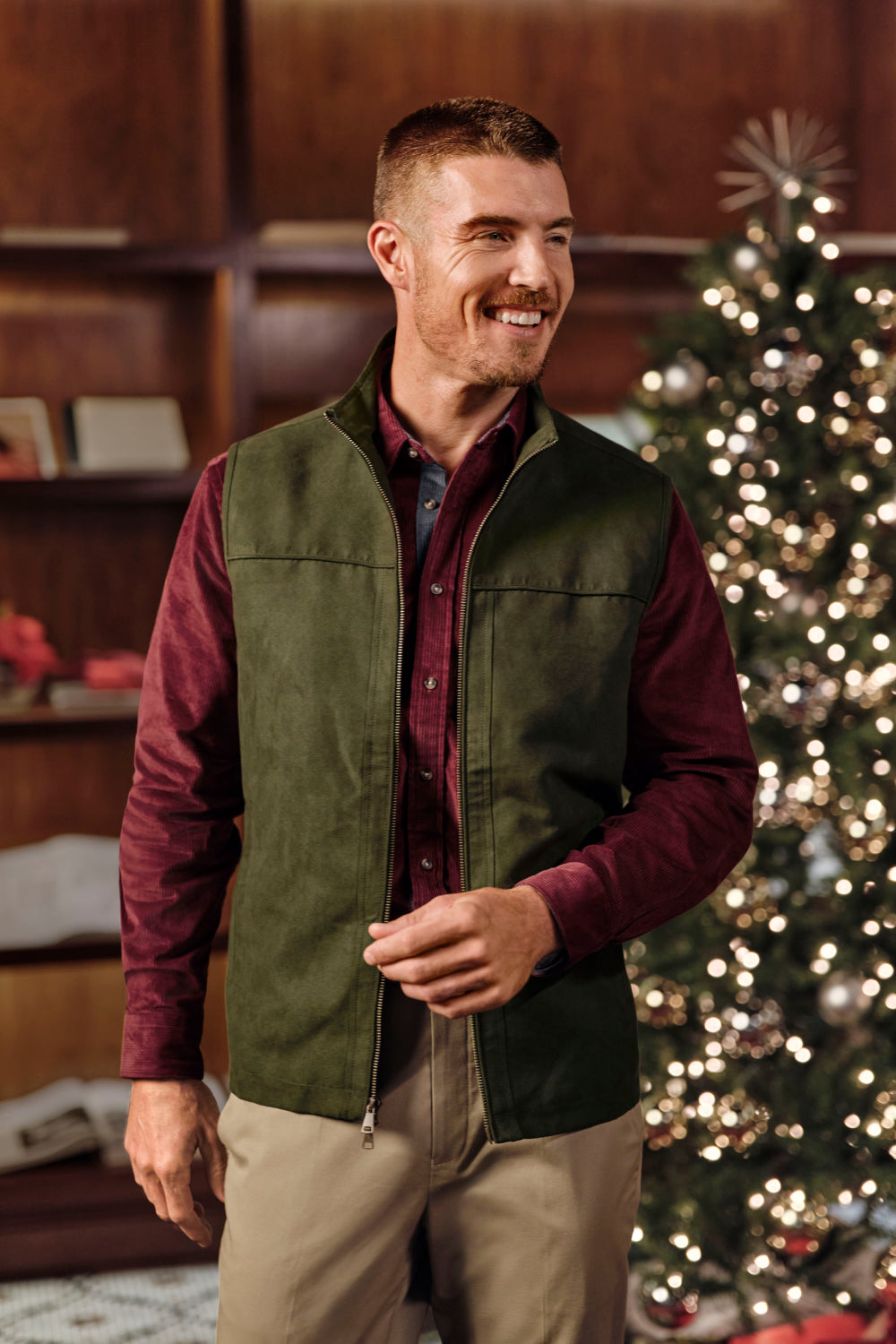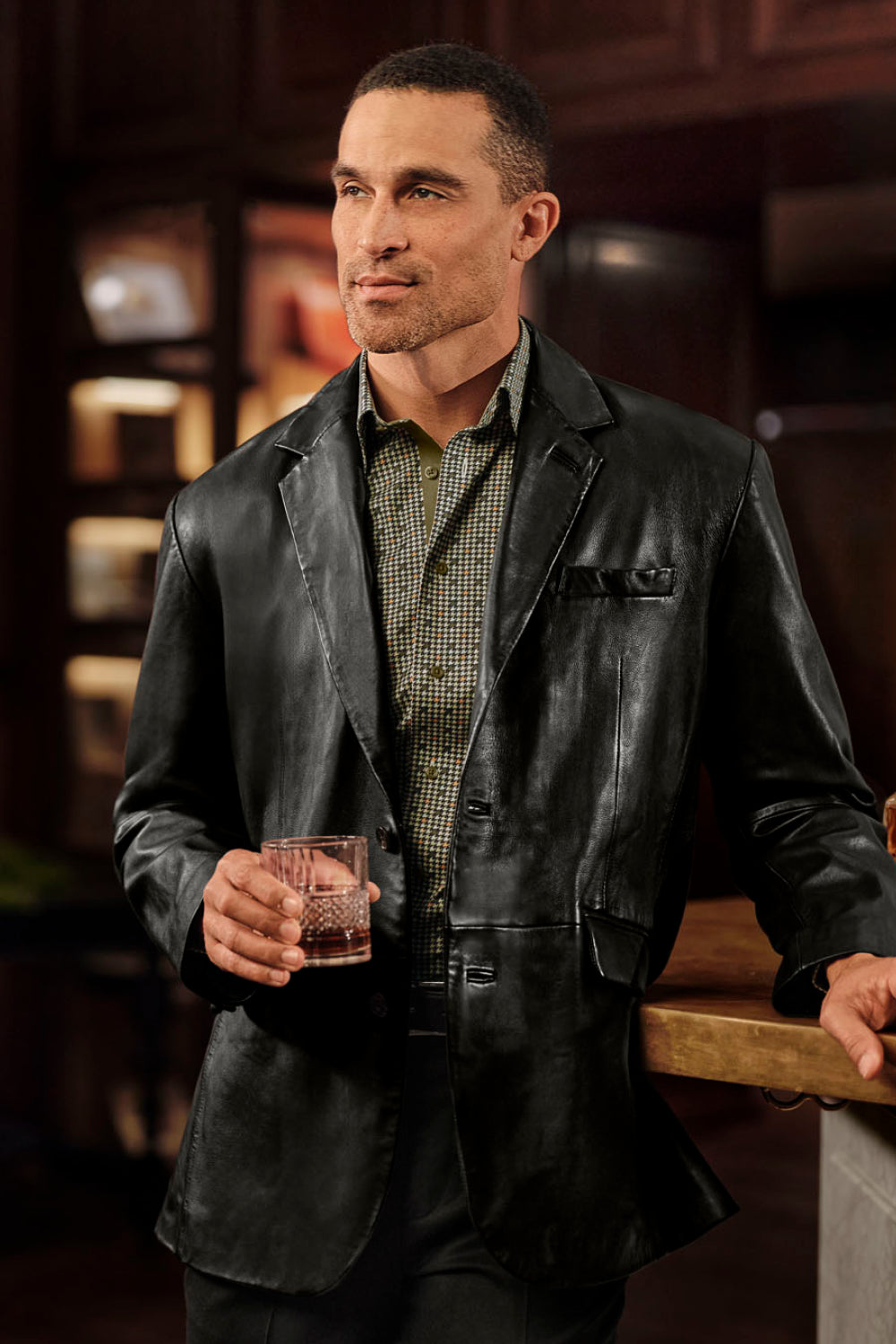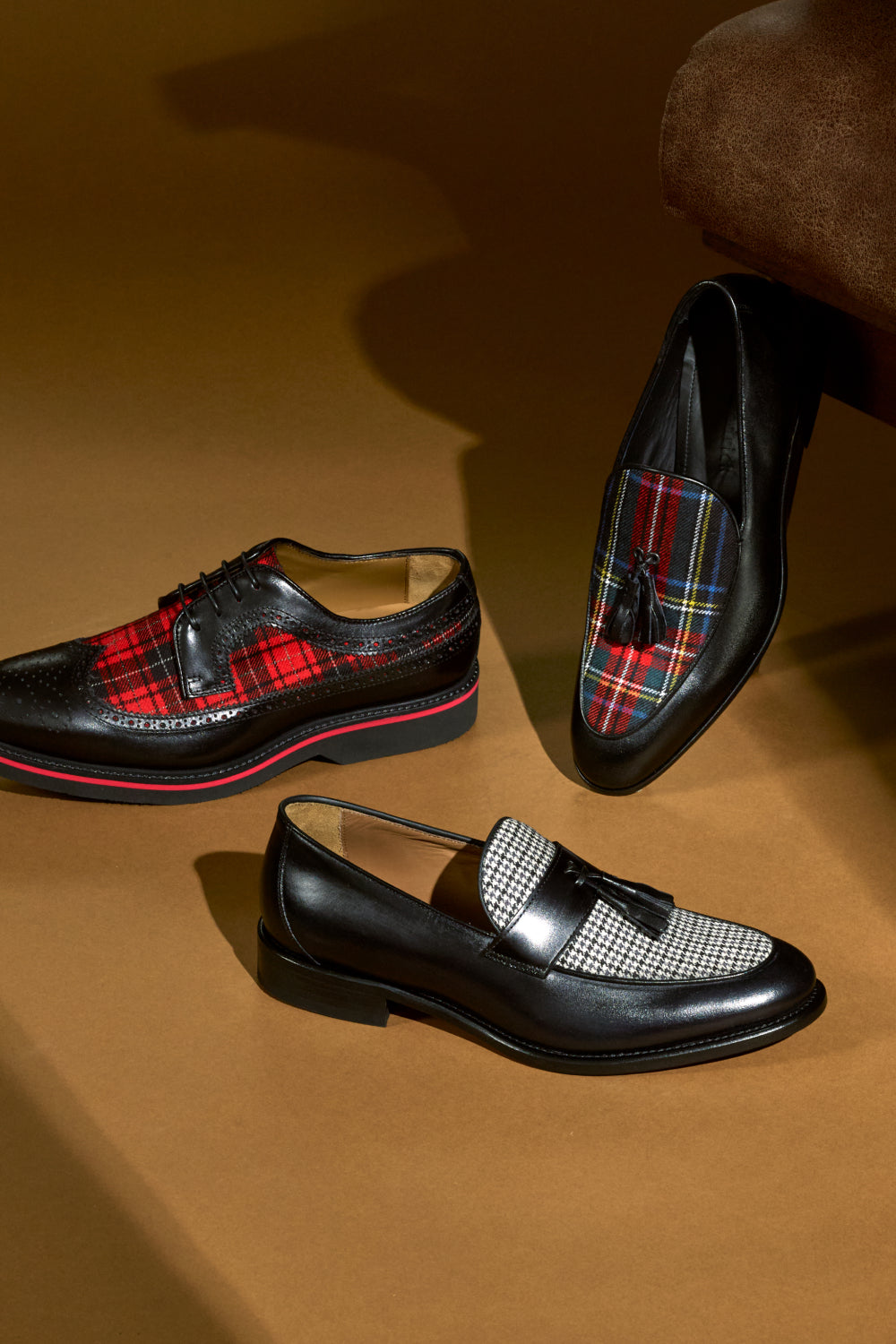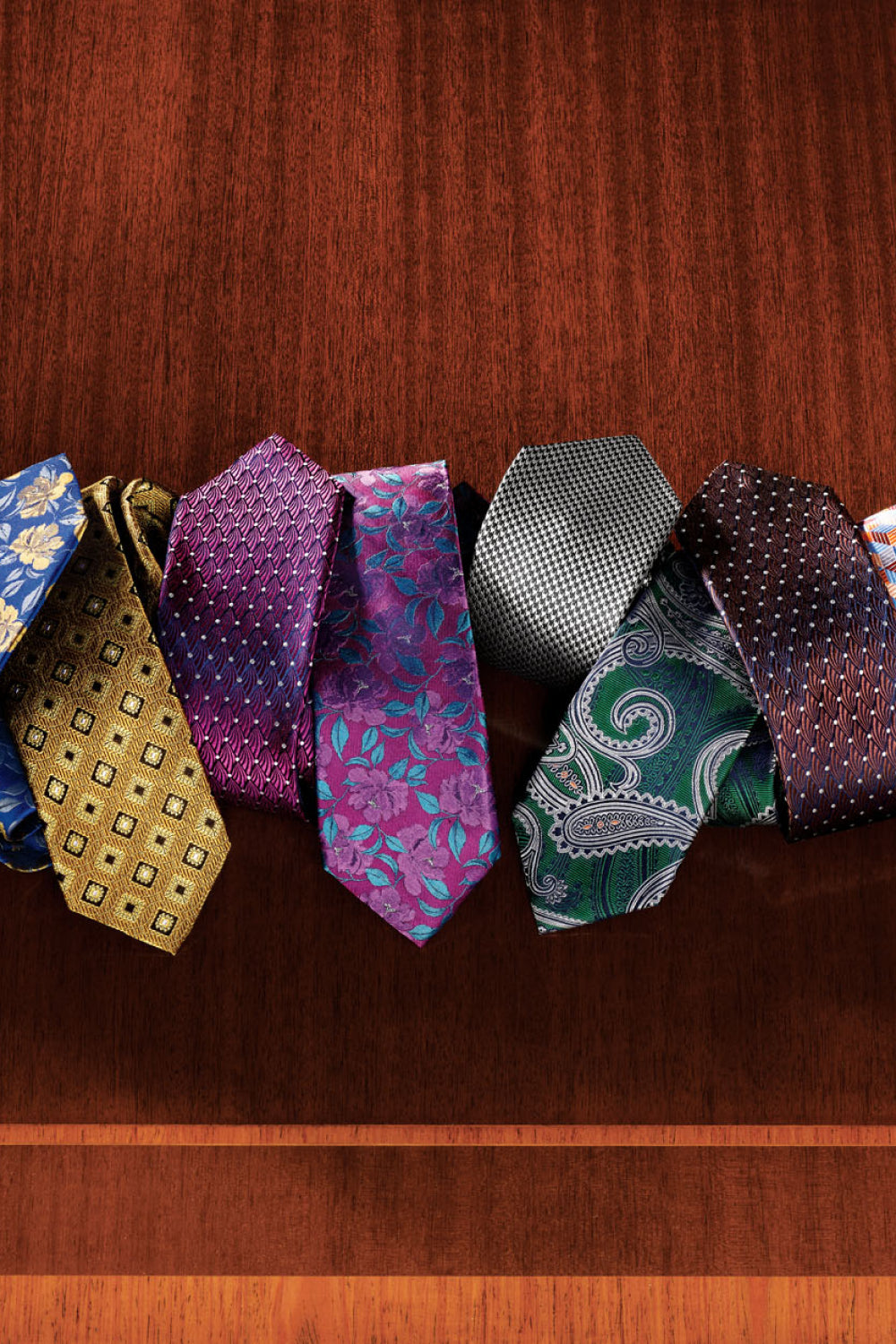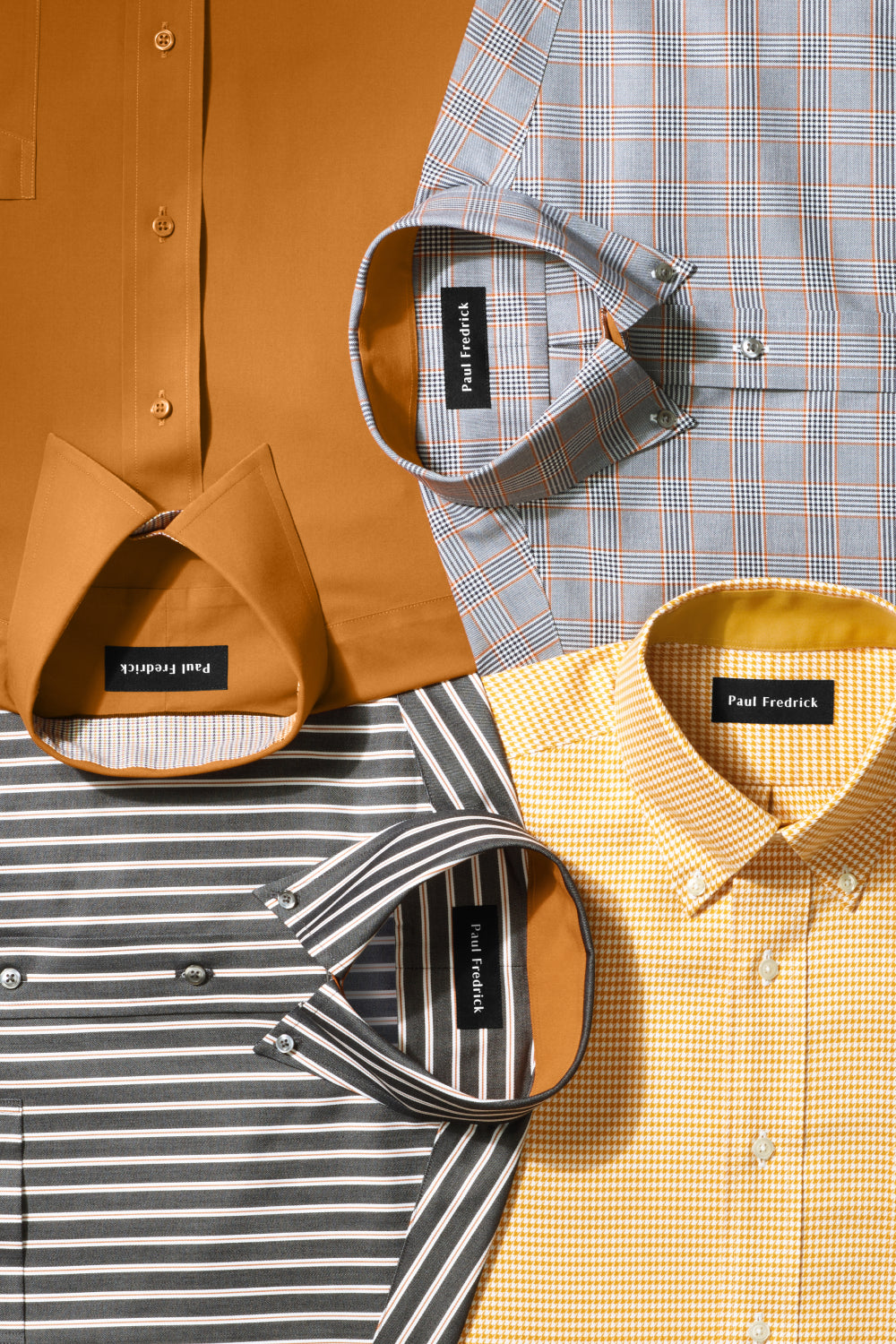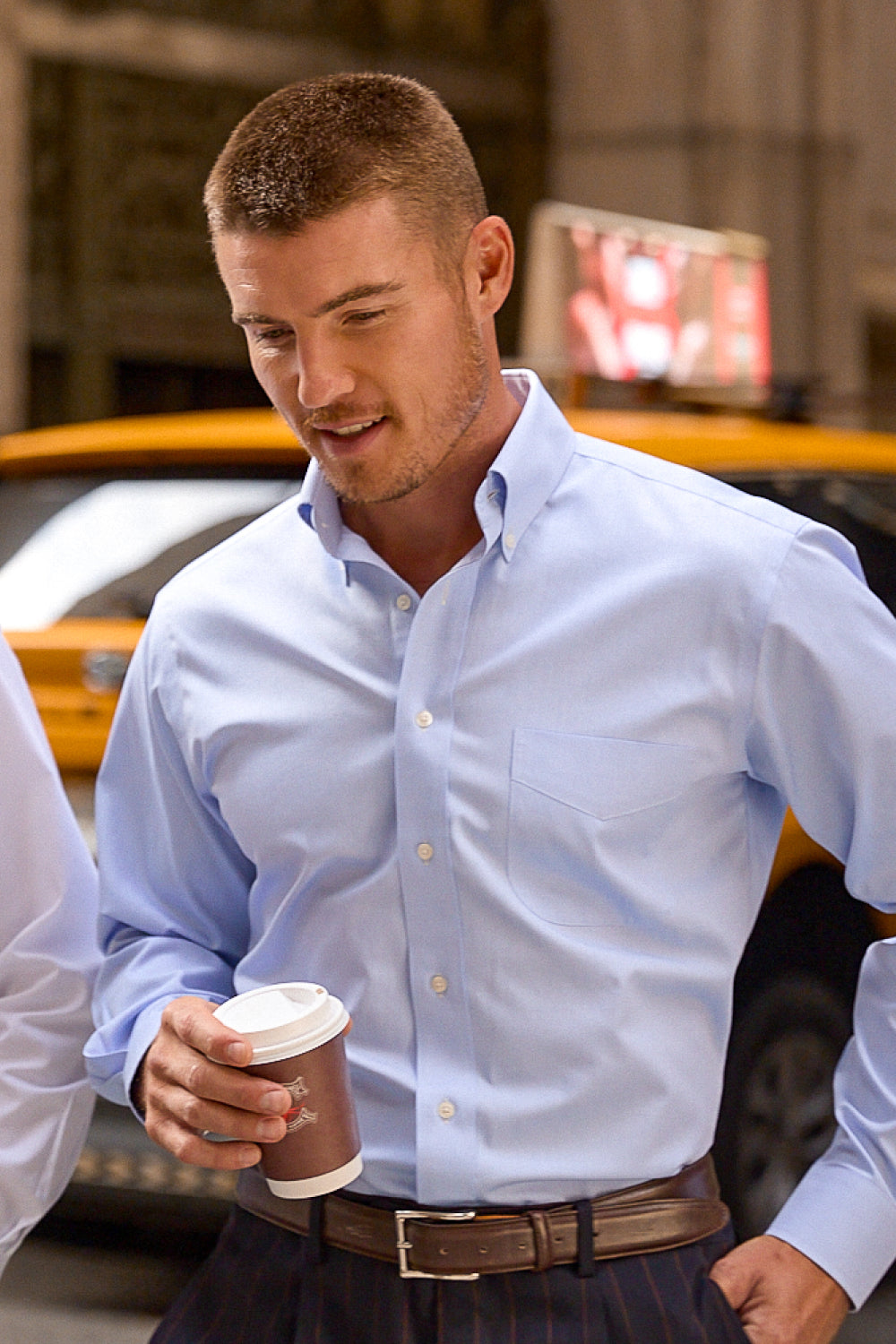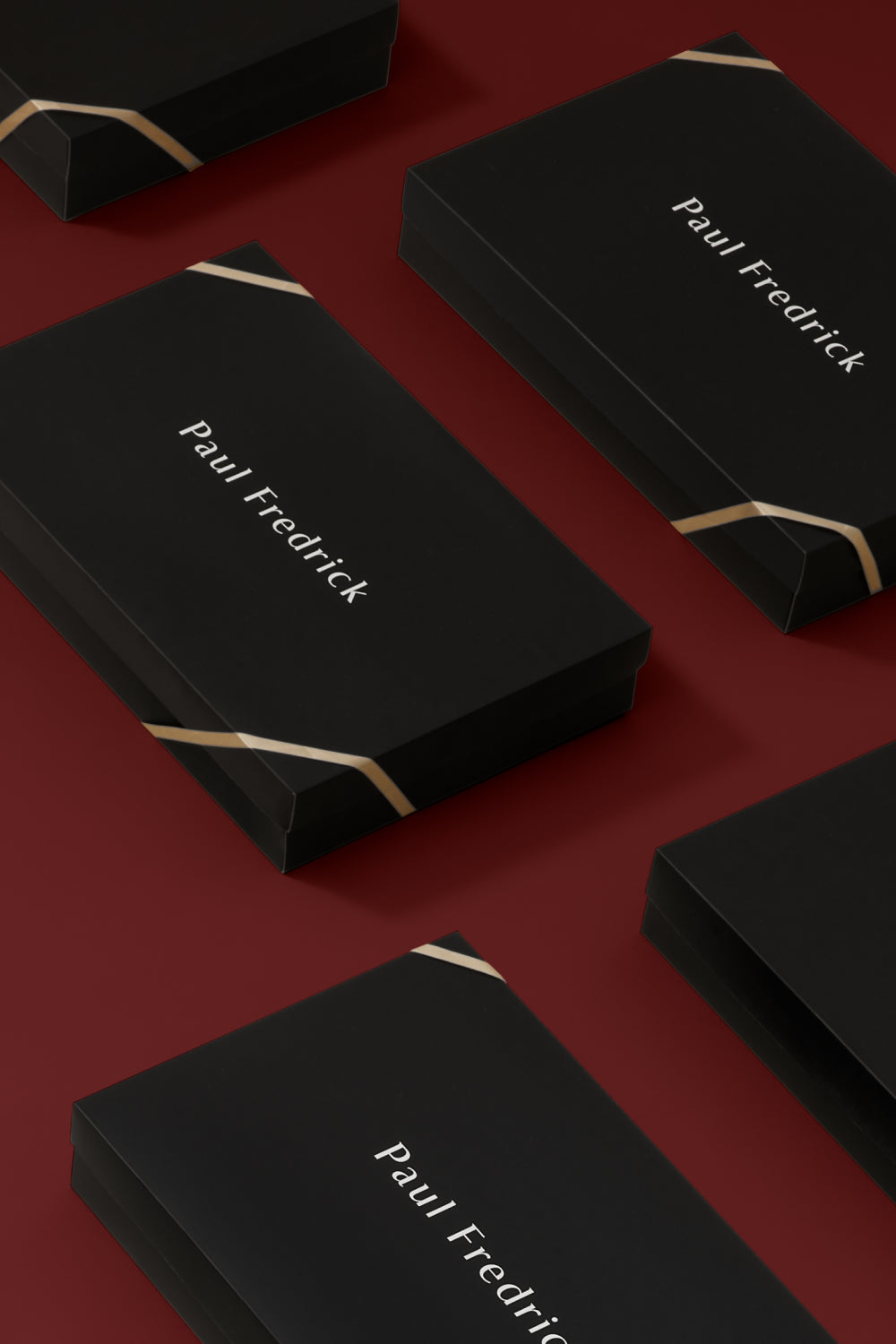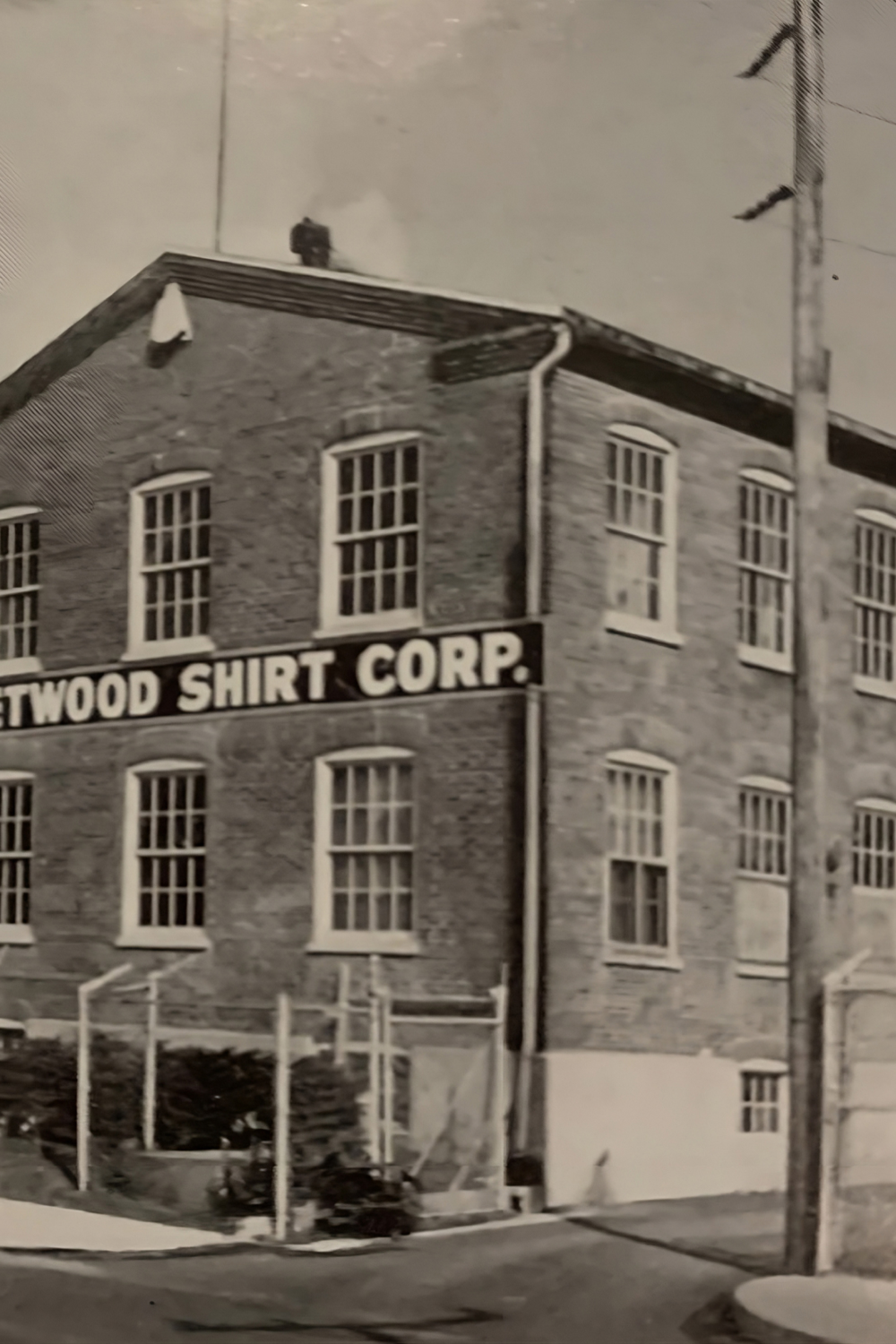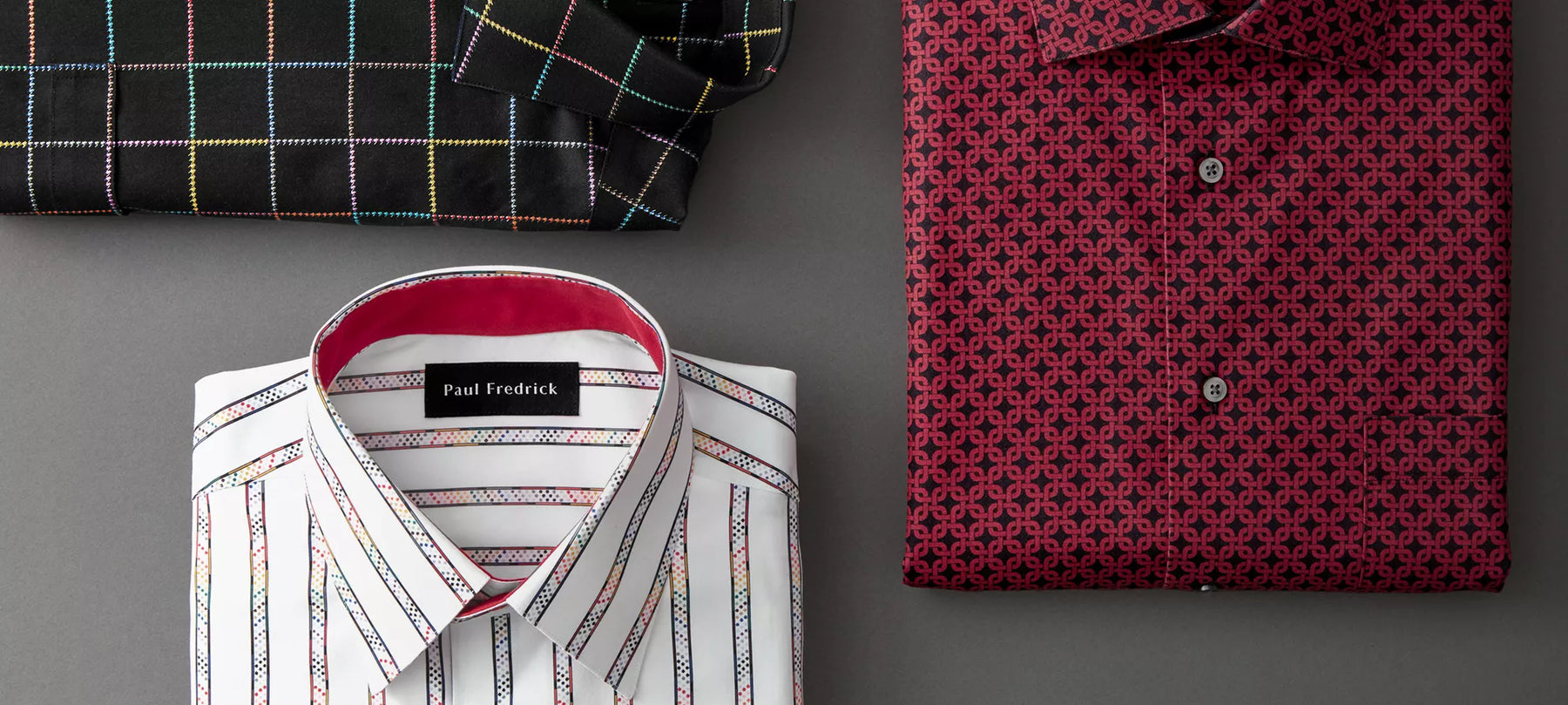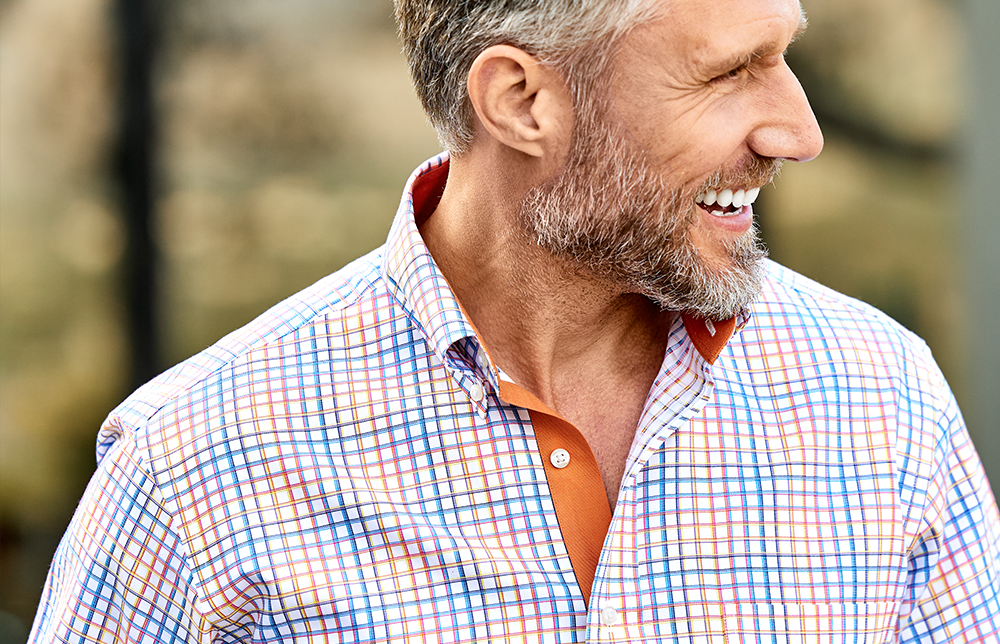It’s the ubiquitous office uniform—a look with universal appeal that fits into almost any situation. Something every guy is expected to have on hand and to know how to wear. But what exactly is business casual men’s attire? How much is business? How much is casual? In this helpful guide, we’ll examine its foundational elements, learn how to style them and offer some advice on how to put your own stamp on the business casual dress code.
Defining Business Casual for Men
Business casual, while still incorporating some dressier touches, is a relaxed response to the stodgy suit and tie of the fabled workplace of the past. As our approach to work has changed, expectations have shifted on what is appropriate office attire. Young people in the 50s and 60s graduated into their first jobs and brought elements of a rebellious Ivy League look from the campus to the high-rise. Today, a comfortable environment is favored by those who spend long hours at their desk, and no one would be looked down on for ditching the two-piece and accompanying neckwear.
What is business casual vs. business professional?
The iconic image of business casual attire is a straightforward outfit that pairs a dress shirt, usually with a button-down collar, and a pair of dress slacks or chinos. The look is topped with a sport coat—the traditional blue blazer being a favorite. A pair of leather shoes usually completes the outfit. A more relaxed (but still dressy) style of shoe is preferred, like a loafer, derby or oxford shoe. This creates an outfit that is put-together and refined but allows more room for comfort and personalization.
The dress shirt/slacks/blazer look is by no means your only option when it comes to business casual style. In fact, it is no longer the most common day-to-day ensemble for the average office worker. A nice shirt and pair of slacks alone should do the trick, and this is usually preferred for its ease and practicality.
The sport coat has become optional, especially during warmer months. Polo shirts and sweaters can be worked into the mix. As the trend towards more casual style continues, other types of shirts, pullovers and jackets have become acceptable, dress code allowing.
When to Wear Business Casual
As its name implies, the primary place you will see business casual dress is at the office. We’ve previously mentioned that the look can be as basic as a nice dress shirt and trousers—presentable and unpretentious. You can add a jacket to the mix for important meetings where you want to look your best. This blending of a polished look with elements that feel a bit more relaxed has expanded its appeal beyond the workplace.
Outside of work, we often see outfits that share some core elements with what we would call business casual. A put-together look that doesn’t go over the top might be the perfect style for date night. When you are expected to look your best but not given a strict dress code, such as at some weddings, a dressier version of business casual can be a great alternative to the suit. You may want to go for a point collar shirt and add a tie depending on how relaxed the vibe is. However, business casual would not be appropriate for events that specifically call for or require a formal dress code such as black or white tie.
Can you wear business casual to a job interview? The option is becoming increasingly common, but it will be on a case-by-case basis. It is best to do your research on the company and the sort of dress code they require for their employees. It can be a good idea to try to match the normal style of the company—but taking it one notch in a dressier direction is a great way to play it safe. Showing up underdressed could suggest you did not put a lot of effort into preparation, but you can never be overdressed.
Other places you might regularly see attire that could be considered business casual (or at least business casual-inspired) include church, the country club or simply out-and-about on a weekend afternoon. It truly is a very flexible and accessible style.
Over the years, the rules surrounding business casual have evolved and created offshoots, like smart casual, so let’s dive into some specific styling advice to put together the perfect look.
What Shirts Are Business Casual for Men?
As previously mentioned, a business casual look still relies on a dress shirt as a staple. Often styles will lean more casual. The button-down, with its history as an answer to the flapping collars of polo players, shows its sporty background as the most relaxed dress shirt collar option.
One of the most typical variations on the button-down shirt is what we would call an oxford (again tracing its roots as a popular option back to the university campus). The oxford’s name has become synonymous with its slightly textured, weightier fabric. Our Pinpoint Oxford Non-Iron Shirt remains one of our most popular styles due to its widespread appeal. It isn’t a faux pas to wear a tie with this type of shirt, but it does its best work with the collar open for a relaxed feel—besides, a tie isn’t a required element of business casual.
Dress shirts made of finer fabrics and featuring point collars are another option that can dress up a business casual outfit. While the oxford is typically (but not exclusively) available in traditional solid colors like white, blue and pink, when going with a different style, a bright white shirt with point collar might end up looking a bit stuffy and formal. So, lean into colors and patterns that bring a bit more interest and personality to the outfit. Examples of these business casual looks can be seen in our wide range of 100% cotton non-iron shirts.
Tab or spread collars are to be avoided as they require a tie and lean more formal in appearance. Long-sleeve shirts are usually preferred, but when temperatures rise it would not be out of place to see rolled-up sleeves or short-sleeve versions of an oxford. It will really depend on the setting or the established policies of a workplace. For long-sleeve shirts, button cuffs are favored for their simplicity, but there may be times that a French cuff could work (bringing the added interest of a nice set of cufflinks). The French cuff, though, is more representative of a business professional look.
In more recent decades some styles of knit shirts, such as the polo shirt, have found their way into business casual men’s attire. They can be styled similarly to a dress shirt with a sport coat or blazer if you choose. In addition to the polo, sweaters also work as an outer layer or even worn without a collared shirt underneath. More refined button-up casual shirts, like some options that we offer at Paul Fredrick, could also be dressed up to fit a business casual look, but this really depends on the shirt and is not always recommended.
Which shirts are not business casual? Up front is the t-shirt. You probably want to avoid Henley-style shirts and sweatshirts, as well. You definitely want to avoid a v-neck t-shirt. There are always exceptions, however. When it comes to the t-shirt, in some cases it could be acceptable to wear as an underlayer when a sweater is your primary business casual top.
What Kind of Pants Are Considered Business Casual?
The quintessential business casual pant is the chino. Chinos are often commonly referred to as khakis. As a point of clarification, khaki actually refers to a color rather than an actual style of pants. But its association with the chino style has made the terms practically interchangeable. Chinos are popular business casual pants because they are tailored with a similar appearance to dress pants but in a more comfortable fabrication.
As mentioned, khaki has long reigned supreme, but other popular colors include your typical dress blues, greys, blacks and lighter or darker tan shades. Over the years, a varied range of colors have been introduced to include preppy pinks and yellows, striking reds and even more.
Wool gabardine pants (AKA the wool gab or simply gab) are a slightly dressier alternative to chinos that still find their place in business casual attire. This is a classic, traditional pant with timeless style. If you are looking to streamline your wardrobe, the gab could be a good option for its flexibility, since it can be worn as part of a more formal look, as well.
Another great option would be something like our microfiber pants. These maintain the clean and refined lines of the wool gab but are made of a comfortable microfiber fabric. Along with a range of color options, these pants bring pattern into play with familiar styles like herringbone, houndstooth and plaid. Pattern is a great way to introduce visual interest to your business casual look, no matter the style of pants.
On the more casual side of the spectrum, you will find pants that fit the business casual dress code that are equally appropriate as part of a comfortable out-of-office look. Our Cotton Stretch Twill Pants fit the bill. Their construction is similar to a chino, and the addition of just a bit of stretch is a perfect way to introduce a little extra comfort into a business casual look. Corduroy pants are another type that straddle the line between casual and office wear. These can be acceptable in some instances, but be sure to pay attention to the features of the specific pant. You’ll want something with pockets and styling more similar to chinos than to jeans.
When it comes to options like flat front or pleated, cuff or no cuff at the hem, there is no hard-and-fast rule about which is better suited for business casual. These decisions will come down to personal preference and the look you are trying to achieve.
Are Jeans OK for Business Casual?
In short, no. Jeans would not be an acceptable part of a business casual outfit. It follows that any jeans with excessive wear, fading or holes should not even be a consideration. There’s a reason so many companies offer Jeans Friday policies as a perk, and that’s because jeans would be out of place in the office on days when the normal business casual dress code is expected. Even on days when jeans are allowed, always aim to be presentable—don’t put on that slouchy pair you’ve worn down over years.
Other pants to be avoided would be any five-pocket style similar to jeans. You might think you can sneak a pair of denim trousers in a dark wash into your office outfit, but don’t be that guy. It goes without saying that sweatpants, joggers and shorts should not be on the table when dressing business casual.
Is a Sport Coat Required for Business Casual?
While the sport coat or blazer was a central aspect of the business casual look in the past, current trends have moved away from this added layer. Using our advice above on shirts and pants alone would be enough to build a great wardrobe of business casual attire. These days, the sport coat is the icing on the proverbial cake.
If you only want to own one or two sport coats, you can’t go wrong with a traditional wool blazer. You know the type—a classic silhouette with a less formal appearance than a suit jacket, metal buttons, standard colors like blue, black and grey. It’s appropriate any time of year. Our Travel Blazer takes this a step further with wrinkle and stain resistance and an emphasis on comfort, making it a great option for long days at the office or jet-setting off on a business trip.
With your basic blazer taken care of, you can expand your business casual wardrobe with more interesting takes on the sport coat. Unique colors. Patterns. Subtle details like interior lining. Likewise, it’s great to have options as the weather changes throughout the year. Wool is worn year-round unless the specific sport coat is made in a heavier weight. Linen is light and breathable and excellent for summer. Donegal wool and corduroy shake things up with collegiate styling. Our selection of sport coats covers this wide range of looks and fabrications and is a great place to find inspiration.
As for how to wear your sport coat as part of a business casual look, most will take a no-frills approach. By itself, the sport coat looks great over an oxford shirt or with a sweater as an added layer. Wear over a knit shirt or sweater with no collared shirt underneath to bring distinctive style to your outfit. Accessories like a pocket square are less common, but that does not mean they are not allowed. If you like to show a little extra personality, this could be just the touch you are looking for.
Is a Tie Business Casual?
In concern to business casual, you are free to choose when and where a tie is worn. In the style’s most basic iteration, a tie is not required. But where there is room to lean into the more relaxed side of business casual, there is also room to go in a dressier direction. Along with adding a sport coat, a tie can be one way to give your look some added panache for those moments you want to shine.
For those days you want to add a tie, the sky is really the limit on what to choose. There are plenty of patterns, both traditional and unique, along with colors to match or contrast with any shirt and/or sport coat. Pick the knot you’re comfortable with, whether it be a simple four-in-hand or the more robust Windsor. Since the goal of business casual is to keep things a little laidback, there are times you might go with your top button undone and the tie worn a little loose, if this is acceptable.
If you are feeling a little more adventurous, mix in a bowtie for a look that will turn heads. If you do, though, it’s probably best to pair this with a sport coat or blazer. The shirt and bowtie look alone could stand out in the wrong way. Be careful choosing in which situations you wear this sort of tie. It’s something most people don’t see every day and could be an attention-grabbing distraction during an important presentation. When in doubt, opt for the regular tie if you’d like to feature some neckwear.
Business Casual Shoes
One element we have not given much attention so far is footwear. Business casual shoes can be varied but are typically a leather style like oxfords (not to be confused with the shirt), loafers or derby shoes. Dressier styles like the monk strap, wingtips, and other lace up shoes can also slot into a business casual look. Regardless of the style, most will feature both a leather upper and leather sole, though “hybrid” style shoes with a rubber sole are becoming common thanks to their added comfort.
Most will choose a straightforward look in brown or black. Owning at least one pair in each color makes it easy to pair the right shoe to your outfit. If you’re the type that wants to stand out among your coworkers, we offer styles in fresh colors featuring distinctive details like embossed leather or inset patterned fabric. All in handcrafted Italian leather.
Sneakers and tennis shoes are not considered appropriate for business casual, no matter how much you’d like to emphasize the casual side of things. So it goes for sandals and flip flops—keep your feet covered at all times.
Business Casual Accessories
Business casual has become an office favorite for many reasons, not the least of which is its simplicity and predictability. It can often be seen too much as a uniform, though. The result is that the average guy ends up focusing on simply meeting the requirements, with individuality and personality being an afterthought.
Accessories are one way to take a straightforward business casual look and turn it into a unique expression of style. We have already touched on what a tie can offer to your appearance, and briefly discussed the pocket square in conjunction with a sport coat. To reiterate, both are great ways to add a pop of color and pattern to any outfit. A lapel pin is another way to class things up. These details tend to take your look in a dressier direction.
At a more basic level, a belt is perhaps the most important accessory to consider (shoes withstanding). A rather plain brown or black belt is an obvious choice, and most guys will already have these or should consider picking them up. Leather is always a safe bet for business casual when it comes to belts. Consider our selection for options to add unique details to your look without breaking from business casual traditions. Fabric belts can also be worn at your discretion, but always ask yourself, “would this stick out for the wrong reasons if I saw someone else wearing it in the office?”
Another obvious choice is a nice watch to pair with your look. In a world where we mostly rely on our phones to give us the time, the utilitarian nature of a wrist piece is somewhat lost, so you can’t be blamed if you don’t own or want to wear a watch as part of your outfit. Enter the bracelet, an accessory more and more men are picking up in lieu of a watch. With all of your newfound knowledge in mind, you might think a bracelet does not fit the business casual mold, but we say this is one area where you might bend the rules to show off some attitude.
Finally, don’t sleep on the sock. If you are uncomfortable with the idea of other eye-catching accessories, an interesting pair can confidently add subtle flair to your outfit. Choose matching colors and classic patterns for something easy. Go for a bold, contrasting style if you’re ready to receive some compliments. With a well-fitting pair of pants, just a hint of color and pattern might flash through as you walk around the workplace. When seated, the hem of your pants will fall in a way that the full beauty of your socks is on display.
How to Style Business Casual Attire
You’ve got the shirt. You’ve got the pants. You have a sport coat on call if needed. The shoes are picked out and a selection of accessories is waiting to complete the look. What next? Let’s talk about some more general concepts that will allow your business casual style to stand out.
At Paul Fredrick, we consider fit to be paramount among what makes great clothing. It’s why we offer our Perfect Fit Guarantee. But in a world of off-the-rack clothing, ill-fitting pieces are unfortunately commonplace. Too often we accept this as all that is available to us.
To clarify, when we speak to fit, we aren’t simply talking about waist size or small/medium/large. We are speaking to fit as a holistic concept—clothes should be appropriately sized for comfort and a flattering appearance. The cuff of your shirt should touch at the wrist in just the right place. Your collar shouldn’t be so tight that your face turns red. A sport coat should move with you throughout the day without feeling like a straightjacket.
That is why we emphasize features that address these needs, no matter the guy. Our non-iron shirts feature over 50 exact neck and sleeve sizes. We offer pants with comfortable built-in stretch. Our sport coats and blazers are fashioned with fit in mind—generous enough to freely move, but refined so that you don’t look like a 13-year-old wearing his dad’s jacket. For the guys that leave a larger impact on the world, we offer Big & Tall sizes that won’t look like they were fashioned for King Kong. No tailor needed.
Once you have your size dialed in, you’re already ahead of the pack. What seems like a small difference turns your look from average to bespoke.
Here’s another tip: keep your clothes looking their best. This means regular care and washing, but hopefully not as much ironing thanks to our non-iron shirts. Some specialty garments will require dry cleaning. It can be a pain to drop off and pick up, but making this a habit will pay off.
Finally, make the look truly your own. Choose styles that speak to you. Colors that bring out your best. Patterns as interesting as you are. Distinctive details like contrast trim and dyed-to-match buttons can make a shirt spectacular. A bold sport coat makes for playful pairing. Polished accessories show that getting ready for your day is about far more than meeting a dress code.
A Note on Smart Casual
As the workplace continues to evolve, with hybrid schedules and work from home becoming the norm, the trend towards a more casual style of dressing continues. One result of this is the emergence of smart casual, a style of dress that borrows some elements of business casual but allows for more variety in the incorporation of casual pieces.
Smart casual is the look that might come to mind when you think of the wide-open offices of Silicon Valley or that new tech startup—the sport coat remains in some cases, but the oxford shirt is swapped for a more casual button-up or perhaps a t-shirt. A pair of jeans completes the outfit (sometimes even a pair of dressed-up athleisure pants). This style is quickly growing in popularity in other sectors as well.
Smart casual is a way of dressing that in some ways allows even greater flexibility and range than business casual. It looks as great on a weekend date as it does in the office (dress code allowing). But hold back on diving too deep into this style unless your workplace is on board. Outside of the office, you can borrow some of your business casual pieces and work them into a smart out-of-office look.
Make Business Casual Work for You
It’s official: you’re a business casual pro. As with anything in life, it’s never easy to master the ins-and-outs of something right away. It takes practice and experimentation to find what works best. As any great master does after honing his craft, you improvise. Push the limits of what can be. Break a few rules along the way. Soon enough something entirely distinct to you will emerge from the business casual crowd. When the other guys at work want to know how you did it, send them our way.
